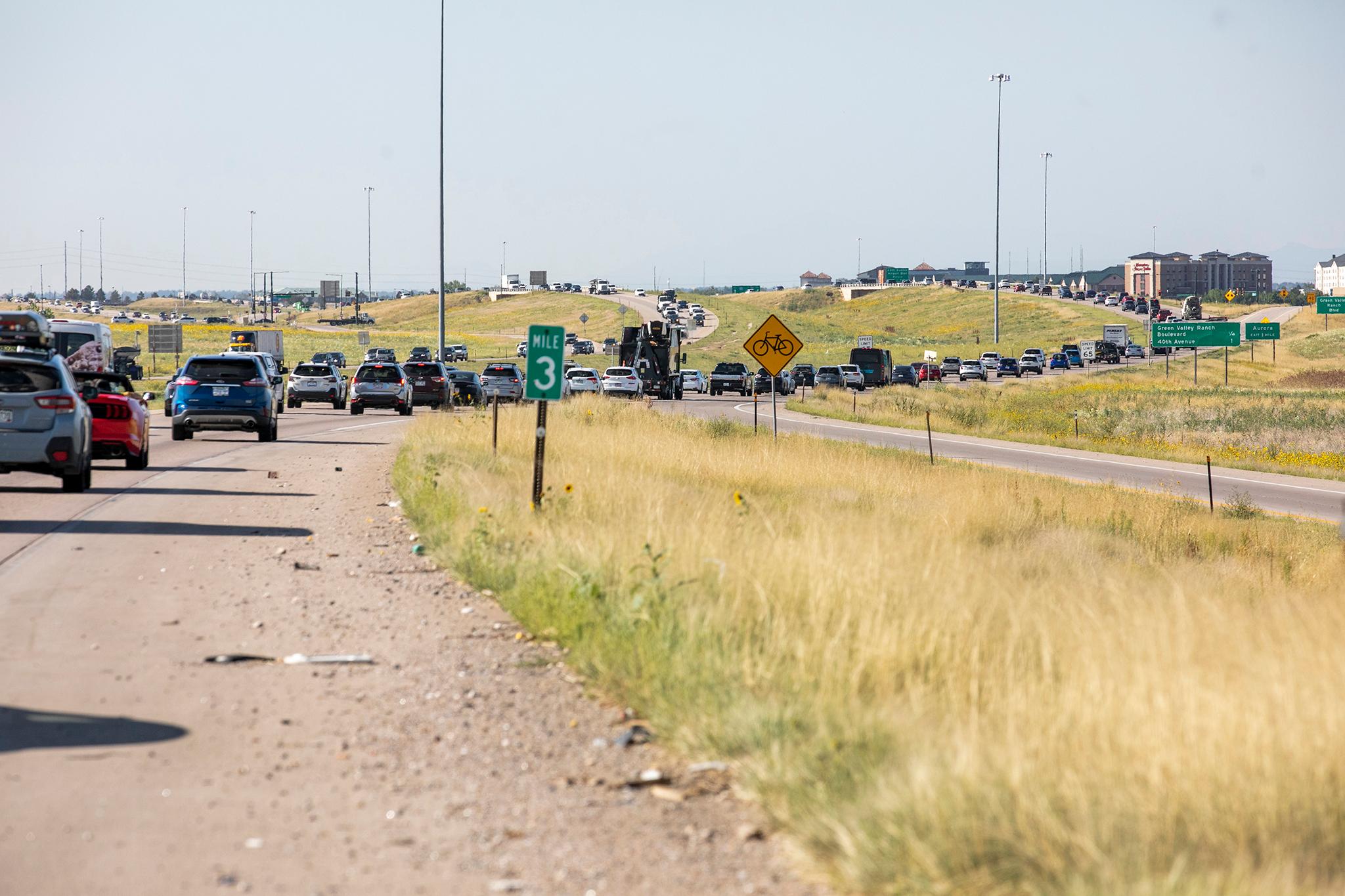With demand growing every year at Denver International Airport and daily traffic already a headache on Peña Boulevard, city and airport officials are planning for what to do about environmental and traffic concerns around the only roadway to the airport.
On Monday, DIA officials released the latest version of a master plan that will ultimately determine the road's future and how it'll provide access to one of the city and state's largest employers and economic engines.
Peña Boulevard traffic has grown quickly in recent years and will likely grow in the future.
In 1998, three years after the airport opened, the road saw around an average of around 67,500 vehicles per day. In 2021, Peña Boulevard saw an average of around 127,300 vehicles per day, and in 2050, that figure is projected to reach around 186,000.
Beyond traffic, congestion is a safety issue. The plan says that 45% of crashes on Peña between 2016 and 2023 were rear-end collisions, largely due to congestion.
Much of that traffic involves cars. In a 2022 survey of nearly 5,000 passengers conducted by the airport as part of the Peña Boulevard planning process, 87% of passengers said they used a car to get to the airport. Just 4% said they took the Regional Transportation District's A-Line -- and that was during July and August of 2022, when RTD made the line free to ride. Of around 2,700 airport employees surveyed, 71% said the drive alone while 17% took public transit, with a number of people citing the high cost of the train.
In planning for the future of Peña Boulevard airport officials have said they want to push more people toward public transit, something transit advocates have been pushing for. But the Peña plan also considers how to manage increased car traffic in the future.
The five alternatives to the status quo include things like a bus-only lane, a toll lane or a frontage road.
A bus-only lane would create a new lane along Peña for RTD buses, mountain shuttles and other transit vehicles. Another option would involve adding a "managed lane." One option for a managed lane would restrict one lane of traffic for cars with at least two people (an HOV, or high occupancy vehicle, lane). Another option would create a toll lane similar to those on I-70 and I-25.
Airport officials are also looking into the possibility of building additional roads alongside but offset from Peña Boulevard. One version would be a frontage road parallel to Peña Boulevard that would provide better access to local streets off the highway, catering to local residents and workers in Green Valley Ranch who are not headed to the airport.
Another option would involve a collector or distributor road that would look like a freeway parallel to the main Peña Boulevard road and would separate an "airport express lane" from local traffic.
A fifth alternative would involve building nothing at all and making no changes to the road beyond pavement and safety upgrades.
What are the chances these alternatives could happen?
The team behind the plan will continue to study and refine the existing proposed options, looking at how they might affect traffic flow. But a final blueprint for the future of Peña is a long way off; the airport plans to choose a consultant by the end of this year and complete planning, design and environmental review on a chosen plan by the end of 2027.
As part of its planning process, Denverites can explore all the plans at the airport's "virtual open house" and give feedback online through March 8.













